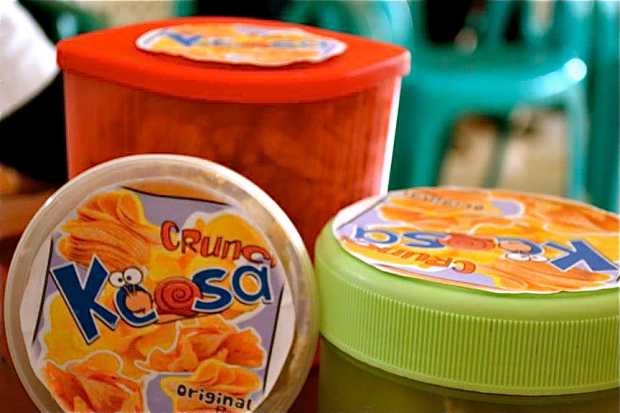Not a member yet? Sign Up!
Info
Please use real email address to activate your registration

When we were invited to visit a cooking demonstration using apple snails as the ingredient, we instantly thought about Andrew Zimmern with his famous TV Show: Bizarre Foods. Zimmern who travels around the world and has appeared in more than 100 episodes tried pigeon pie, armadillo barbeque, and lambs tongue. He even visited Indonesia and drank cobra blood.
Agriculture Pests
Karawang District, where we headed for on a Saturday is famous for its rice producing area. Located about 50 kilometers east of Jakarta. Karawang’s 100 000 hectares rice fields (equal to the size of Bangkok or Berlin) produce a lot of rice. Unfortunately, agricultural pests like the apple snails affect production in the area. In some cases these apple snails invaded almost half of farmers’ work fields.

A group of students: Anggi Gayatri Setiawan, Indah Faradisah, Nessy Diana Kumalla Sari, Muh. Subiyantoro came up with an idea to make food products using apple snails.
They were very optimistic of the feasibility since snail is consumed in many countries as a delicacy, such as escargot in France and abalone in the US and Australia.
Studies on the nutritional value of snail have reported that snail is high in protein but low in fat contents. It is estimated that snail consists of 15% protein, 2.4% fat and about 80% water.
Leadership competition
Anggi and her friends developed a project plan called Saung Keosa, and entered in ULAS (Unilever Leadership Actions on Sustainability) competition, a local program initiated by Unilever Indonesia and Faculty of Economics University of Indonesia for young leaders. ULAS called for applications to take actions based on sustainability principles by addressing various problems around communities.

Saung Keosa was selected as one of the top 10 teams to implement their projects with two months support from Unilever Indonesia and Faculty of Economics University of Indonesia. Their objectives were to minimize apple snails without pesticides, to create business opportunities, to reduce poverty and to educate communities to be more innovative.
After deciding on apple snail chips named Keosa Crunch as the first food product, the team organized recipe competition among mothers in the area. Saung Keosa team also did an organoleptic test to see how panelists like the texture, aroma, taste and presentation of the crunch. A market test for respondents in selected rural area and urban area was conducted to see acceptance in terms of taste, shape, presentation (raw or cooked) packaging size, price, and the sales outlets.
Community participation
A group of mothers from the Family Welfare and Empowerment Team (PKK) greeted us in Sukasari District Hall in Karawang Regency. The afternoon hot sun did not dampen their enthusiasm in explaining how they have worked with Saung Keosa team to produce Keosa Crunch.
Our apprehension on apple snails as food products diminished when watching the team’s excitement in cooking with the ingredients. It was as if they were preparing a cuisine with prime ribs bought from a grocery store rather than cooking agricultural pests collected from a rice field.

The apple snails, straight from the rice fields, have to be cooked for one hour then cleaned before they are ready to be minced and processed as Keosa Crunch.
Sukasari mothers and ULAS students chatted and laughed while skillfully mixing the batter, followed by steaming and slicing the dough, before finally frying the chips. While eating the finished product, some were still amazed that there are chips made of snails.




The winning team
Saung Keosa team had met their target of having at least 10 people as champions to learn the concept and eventually produce Keosa Crunch as a feasible food product.
Due to their innovative products and leadership efforts, ULAS judges decided that Saung Keosa is the winning team among the top 10 teams.
On U-Day, Saung Keosa team received prizes that include education funds, opportunities to participate in Unilever Leadership Internship Program, and visit to Unilever Regional Office in Singapore.
The team is ready to continue their program to a wider area with more products. Success is on the way since they are already trained in all aspects of sustainable business starting with Keosa Crunch, the crispy and savory apple snail chips.


NOTE:
Saung Keosa team generously shared its Keosa Crunch recipe to give us an idea of how the innovative food product is produced. Due to food safety reasons, we would however advise interested readers to consult them before trying the recipe.
Keosa Crunch Recipe
Ingredients:
Method:
-------------------------------
Images: Saung Keosa Team, Radar Karawang, Omar Niode Foundation,
